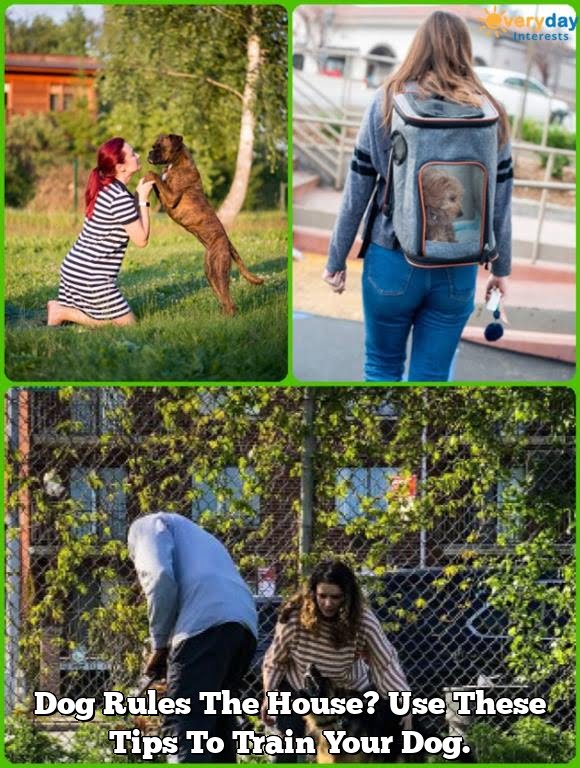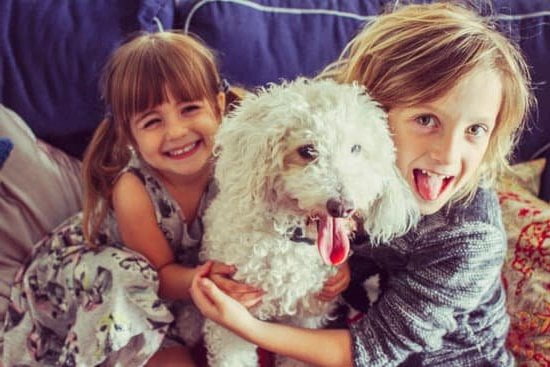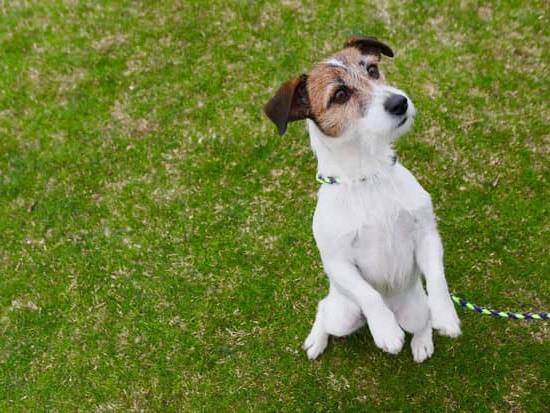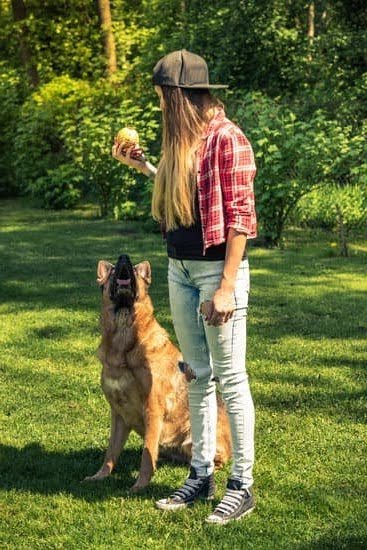Are you wondering, “how do I train my dog to use the potty effectively?” Potty training is an essential skill for any dog owner to teach their furry friend. Not only does it promote cleanliness and hygiene, but it also helps establish a strong bond between you and your pet. In this article, we will explore the various methods and techniques to successfully potty train your dog.
Understanding your dog’s behavior and signals is crucial in the potty training process. By recognizing when your dog needs to go, you can effectively guide them to the designated area. We will delve into the importance of observing your dog’s body language and cues, allowing you to anticipate their needs before accidents occur.
Additionally, creating a consistent potty training schedule and routine is key to success. Dogs thrive on predictability, so we will discuss how to set up a structured routine that promotes positive habits. From there, we will explore positive reinforcement techniques, introducing commands and signals, utilizing crate training, and addressing common challenges that may arise during the potty training process.
Understanding Your Dog’s Behavior and Signals
Observing Your Dog’s Behavior
One of the first steps in potty training your dog is to understand their behavior and signals. Dogs often exhibit certain behaviors or signals when they need to relieve themselves, such as pacing, circling, sniffing the ground, or whining. It’s important for pet owners to observe and recognize these behaviors in order to effectively train their dog to use the appropriate potty area.
Learning Your Dog’s Routine
Every dog has its own routine when it comes to potty breaks. Some may need to go out immediately after waking up or after a meal, while others may have a more predictable schedule. By learning your dog’s routine and paying attention to their behavior, you can better anticipate when they need to go outside. This understanding will be crucial in establishing a successful potty training routine.
Communication With Your Dog
Building a strong bond with your dog involves clear communication. When it comes to potty training, it’s essential to establish effective communication with your pet. This can include using verbal cues or commands and paying attention to non-verbal cues from your dog. By establishing clear communication, you can effectively teach your dog where and when it is appropriate for them to relieve themselves.
By understanding your dog’s behavior and signals, you can lay a solid foundation for successful potty training. Recognizing the signs that indicate when your pet needs to go outside will help you develop an effective potty training schedule and routine. Additionally, building clear lines of communication with your pet will ensure that they understand what is expected of them during the potty training process.
Setting Up a Potty Training Schedule and Routine
Understanding Your Dog’s Bathroom Needs
The first step in setting up a potty training schedule is understanding your dog’s bathroom needs. Dogs typically need to go potty after waking up, after eating or drinking, and after engaging in physical activity. By recognizing these patterns, you can anticipate when your dog will need to go outside and plan your potty training schedule accordingly.
Creating a Potty Training Schedule
Once you understand your dog’s bathroom needs, create a daily potty training schedule that aligns with those needs. Take your dog outside to the designated bathroom area at regular intervals throughout the day, such as first thing in the morning, after meals, and before bedtime. Consistency is key in reinforcing good bathroom habits. Additionally, make sure to leave them enough time to thoroughly sniff around and find a spot before rushing them back inside.
Maintaining a Routine
Consistency is vital in potty training. Stick to the established schedule every day until your dog becomes accustomed to going outside at specific times. Be patient as it may take some time for your dog to adjust to the routine. Avoid deviating from the schedule as much as possible, even on weekends or during busy periods. This will help reinforce the behavior you are trying to instill in your pet.
Positive Reinforcement Techniques for Potty Training
Potty training your dog can be a challenging process, but with the right techniques and consistency, it is definitely achievable. One of the most effective ways to train your dog to use the potty is through positive reinforcement. This method involves rewarding your dog for exhibiting the desired behavior, in this case, using the designated potty area.
Positive reinforcement can come in various forms, such as treats, verbal praise, or even physical affection. When your dog successfully uses the potty, immediately give them a treat and praise them enthusiastically. This will help them associate using the potty with a positive experience, making them more likely to repeat the behavior in the future.
In addition to giving rewards after your dog has used the potty, you can also use a cue word or phrase while they are in the act of eliminating. Eventually, your dog will learn to associate that particular word with the action of using the bathroom. This way, even when you are not giving them treats or praise, they will understand that they are doing something right when they hear that cue word.
| Positive Reinforcement Techniques | Benefits |
|---|---|
| Rewards (treats, verbal praise) | Creates positive association with potty training |
| Cue words/phrases | Helps establish communication between owner and dog |
Addressing Accidents and Mistakes
Accidents and mistakes are bound to happen during the potty training process as your dog learns the appropriate behavior. It’s important not to scold or punish your dog for accidents, as this can create fear and anxiety around the potty training process. Instead, it’s crucial to address accidents in a calm and understanding manner.
When accidents occur, it’s essential to clean up the mess thoroughly to eliminate any lingering odor that may attract your dog back to the same spot. Using an enzymatic cleaner can help break down the urine or feces and remove the scent entirely.
Additionally, it’s helpful to keep a close eye on your dog and recognize their body language and behaviors that may indicate they need to go outside. This includes sniffing around, circling, pacing, or suddenly pausing while playing. By being attentive to these signals, you can prevent accidents from happening in the first place.
To further prevent accidents, consider utilizing a crate or gating off a small area when you cannot directly supervise your dog. This can limit their access to other areas of the house and decrease the likelihood of accidents occurring while you’re unable to intervene.
- Thoroughly clean up accidents with enzymatic cleaner
- Recognize your dog’s body language and behavior signals for needing to go outside
- Consider using a crate or gating off an area when you cannot directly supervise your dog
Remember that patience is key during this process – potty training takes time and consistency. With positive reinforcement, understanding, and consistency in addressing accidents, you can set your dog up for success in learning where they should go potty.
- Be patient and consistent in addressing accidents
- Utilize positive reinforcement for desired potty behavior
- Understand that potty training takes time
Introducing Commands and Signals for Potty Training
When potty training your dog, it’s important to introduce commands and signals to help them understand what is expected of them. Consistency is key when it comes to training, and using the same commands and signals will help your dog learn faster.
One of the first steps in introducing commands for potty training is to choose specific words or phrases that you will use consistently every time you take your dog outside to eliminate. For example, you can use “go potty” or “do your business” as verbal cues for your dog to understand that it’s time to go to the bathroom.
In addition to verbal cues, it can also be helpful to use physical signals such as pointing to a specific spot in the yard where you want your dog to go. This helps reinforce the command and provides a visual cue for your dog. Over time, they will start associating these commands and signals with the action of eliminating.
| Commands and Signals | Importance |
|---|---|
| Verbal cues | Helps dogs understand when it’s time to go potty |
| Physical signals | Provides visual reinforcement for the command |
Using consistent commands and signals during potty training will help your dog understand what is expected of them. This will make the training process more effective and efficient, leading to a well-trained and obedient pet. Remember that patience is key, as potty training can take some time depending on the individual dog.
Utilizing Crate Training for Potty Training
When it comes to potty training your dog, crate training can be a valuable tool in the process. Crate training not only helps with potty training, but it also provides a safe and comfortable space for your dog. Here are some steps on how to use crate training effectively for potty training:
- Introducing the Crate: Start by introducing your dog to the crate as a positive and safe space. Place comfortable bedding and some of their favorite toys inside the crate to make it inviting.
- Using the Crate for Potty Training: When using the crate for potty training, make sure to take your dog outside to their designated potty area before placing them in the crate. Once they come back inside, you can place them in the crate for short periods of time, gradually increasing the duration as they get used to it.
- Establishing a Routine: It’s important to establish a consistent routine when using crate training for potty training. Take your dog outside first thing in the morning, after meals, before bedtime, and any time they show signs of needing to eliminate.
Crate training can be an effective method for potty training, but it’s essential to use it in conjunction with positive reinforcement techniques and consistency. By following these steps and being patient with your dog, you can successfully use crate training as part of your potty training process.
Tips for Consistency and Patience in the Potty Training Process
Consistency and patience are key factors in successfully potty training your dog. It is important to establish a routine and stick to it, as dogs thrive on consistency. This means taking your dog out at the same times every day, such as first thing in the morning, after meals, before bedtime, and whenever they signal that they need to go. By consistently following a schedule, you can help your dog understand when and where they are supposed to eliminate.
In addition to consistency, patience is crucial when potty training your dog. Every dog learns at their own pace, and accidents are inevitable during the process. It’s important to remain patient and avoid scolding or punishing your dog for accidents. Instead, focus on positive reinforcement for successful potty trips outside. Keep in mind that some dogs may take longer to grasp the concept of potty training than others, so having patience is essential.
One way to maintain consistency during the potty training process is by monitoring your dog’s behavior and signals closely. Look for signs such as circling, sniffing around, whining, or heading towards the door as indicators that they need to go outside.
By paying attention to these cues and responding promptly, you can help reinforce the idea that outdoor elimination is the desired behavior. Overall, staying consistent with the routine and exercising patience will help create a positive environment for successful potty training experiences with your dog.
By incorporating consistency and patience into the potty training process, you can effectively teach your dog appropriate bathroom behaviors while fostering a strong bond of trust and communication between you and your pet. Remember that every dog is different, so it’s important to adjust your approach based on their individual needs and progress. With time and dedication, you will see progress in your dog’s ability to use the designated area for elimination.
Troubleshooting Common Potty Training Challenges
In conclusion, potty training your dog is an essential part of being a responsible pet owner. Understanding your dog’s behavior and signals is crucial in effectively training them to use the designated potty area. By setting up a potty training schedule and routine, you can help your dog develop a consistent habit of going to the bathroom in the right place.
Positive reinforcement techniques, such as praise and treats, can be highly effective in encouraging good potty behavior in your dog. It’s important to address accidents and mistakes with patience and understanding, as punishment can lead to fear and anxiety in dogs.
Introducing specific commands and signals for potty training can further aid in the process, along with utilizing crate training when necessary. Consistency and patience are key throughout the potty training journey, as every dog learns at their own pace.
Remember that troubleshooting common challenges is also an important aspect of successful potty training – be sure to seek professional help if you encounter difficulties beyond what you can manage on your own. With dedication, consistency, and love, you can successfully train your dog to use the appropriate potty area.
Frequently Asked Questions
What Are the 5 Golden Rules of Dog Training?
The five golden rules of dog training emphasize consistency, patience, positivity, regular practice, and setting clear boundaries. These principles form the foundation for effective and compassionate canine training.
What Is the Hardest Command to Teach a Dog?
The hardest command to teach a dog can vary depending on the individual animal’s personality and previous experiences. However, “come” or “recall” is often cited as particularly challenging due to the need for unwavering reliability.
What Are the 7 Commands to Train a Dog?
The seven commands to train a dog include sit, stay, down, come, leave it, heel, and off. Mastering these commands not only ensures a well-behaved pet but also enhances safety and communication between human and canine companions.

Welcome to the blog! I am a professional dog trainer and have been working with dogs for many years. In this blog, I will be discussing various topics related to dog training, including tips, tricks, and advice. I hope you find this information helpful and informative. Thanks for reading!





